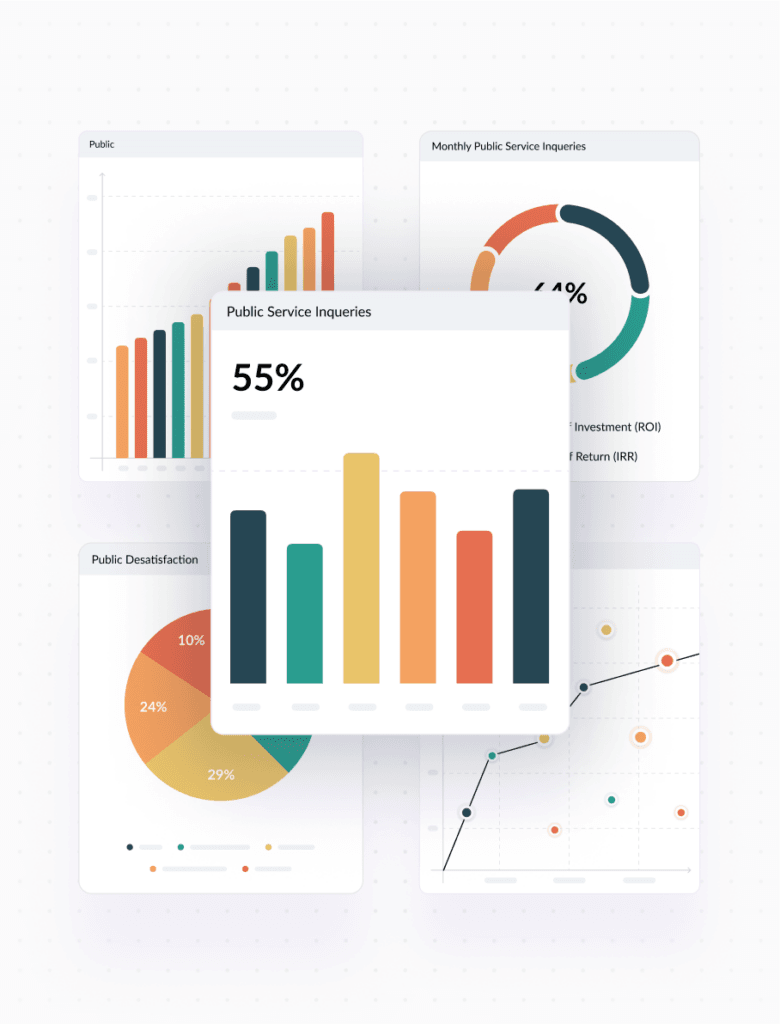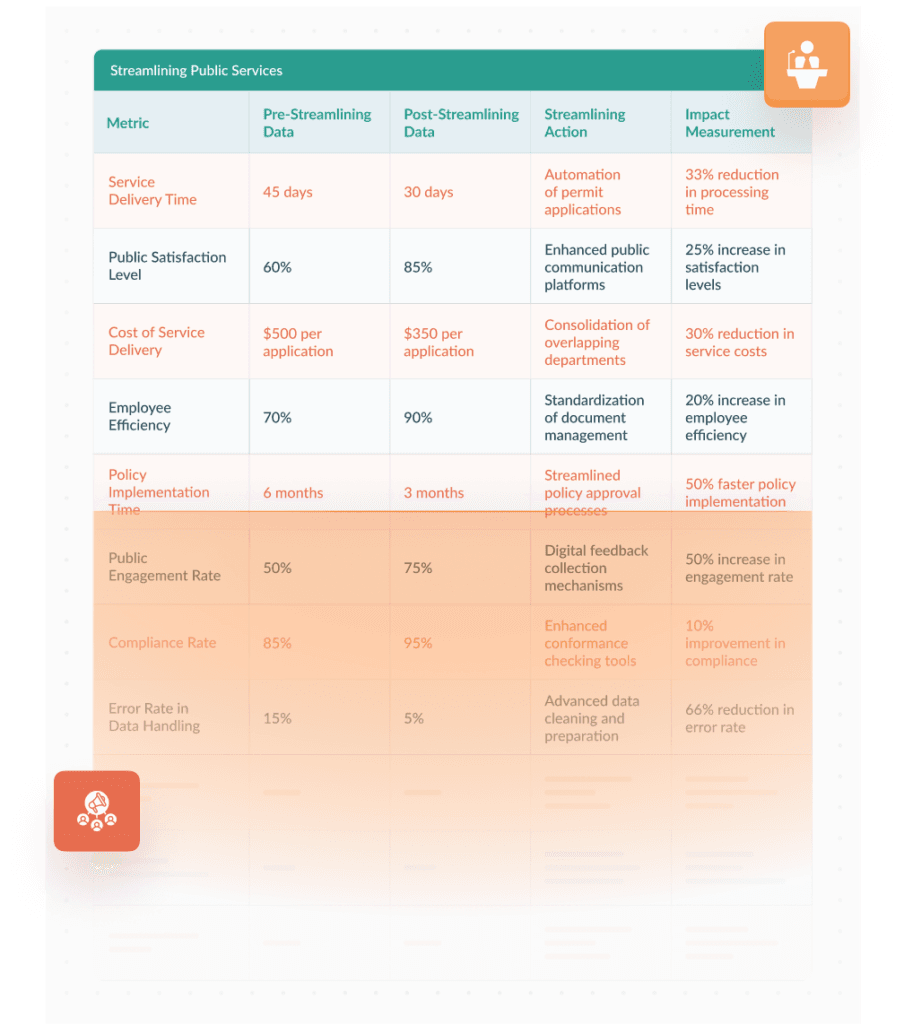Public Administration
Government Services and Administration

Business Intelligence
Compile data on public service delivery, civic engagement, and governmental efficiency to assess the state of public administration
Investigate causes of inefficiencies or public dissatisfaction in government services by analyzing operational data, policy impacts, and public feedback
Use historical data on public needs and governmental responses to predict future demands on public services and potential administrative challenges
Work out policy adjustments or service improvements to enhance governmental efficiency and public satisfaction based on analytical findings
Integrate diverse data from public records, policy outcomes, and citizen feedback to infer strategies for improving public administration and governance
Process Mining
Extract data from governmental systems, public service logs, and citizen engagement records
Refine this public sector data to ensure it is comprehensive and representative of governmental processes
Construct process maps of public service delivery, from administrative functions to citizen services, to understand and visualize workflows
Scrutinize the efficiency and compliance of public administration activities with laws and policies, identifying misalignments and inefficiencies
Enhance public services, streamline administrative procedures, and improve policy implementation based on process analysis


Streamlining
Map government processes from public service delivery to internal administration. Identify inefficiencies such as bureaucratic redundancies, slow service times, or outdated methods of public engagement
Implement e-government solutions to automate permit applications, tax filings, and benefit disbursements. Use digital platforms to streamline public communications and feedback collection
Use metrics such as service delivery times, public satisfaction levels, and resource utilization rates to evaluate the efficiency and effectiveness of government operations
Consolidate overlapping departments or functions to reduce administrative overhead and improve service delivery efficiency
Develop uniform procedures for document management, public inquiries, and policy implementations to ensure consistency and fairness in public services
Establish robust mechanisms for public feedback on government services to continually adjust policies and services to better meet citizen needs
Assess the effectiveness of government policies and administrative processes in delivering public value. Make necessary adjustments to improve governance and public trust
Doubts About Our Process?
Let's Clear Them Up
Do you think some of what we offer is not doable or relevant to your needs, question the validity of anything?
Challenge us with your questions and doubts so that we give you certainty as to what we are going to deliver
- administration directly led to policy improvements or
- cost reductions?
- Can we outline how our services lead to both immediate and long-term benefits, and how we measure these benefits?
- How do we ensure stakeholder buy-in from government employees and officials when implementing new processes or technologies?
- In cases where data integrity is questionable, what specific methodologies do we employ to ensure reliability in our process mapping?
- What are the most common pitfalls
- administration projects we have encountered, and how
- do you propose to avoid or mitigate them in future
- engagements?
Let’s delve into detail
- Q: How do we automate scrutiny of public administration efficiency and compliance with regulations/policies to spot inefficiencies and misalignments?
- A: To answer the question we’ll explain how we automate the scrutiny with our process mining, comparing the actual processes — documented through data and logs—with the predesigned or intended processes and regulatory requirements
- This step is key in several ways:
- Process mining identifies deviations — inefficiencies, non-compliance, or opportunities for optimization — from expected norms by comparing data against established benchmarks or models
collect data by extracting event logs from various public administration IT systems: timestamps, activity names, user IDs, and any other metadata that could provide context to the actions, such as case numbers or service categories.
clean data by removing incomplete records, filtering out irrelevant events, and correcting any inconsistencies in the data. That ensures that timestamps and event sequences are accurate.
generate a model representing the typical execution of processes, say, use the Heuristic Miner, which is effective for complex, less structured processes. It allows for flexibility in discovering the model and handles noise and exceptions well.
apply the Heuristic Miner to the cleaned logs to derive a process model. This model visualizes the sequences of activities, showing the common paths and their frequencies.
establish rules that reflect compliance requirements and policies
work with domain experts to translate laws, regulations, and policies into explicit, measurable rules. For example, “All procurement above $10,000 must be approved by a senior official.”
use a declarative approach like the Declare framework to encode these rules into constraints that can be automatically checked against the process model.
compare the actual process execution against the compliance rules by using the Conformance Checking Tool in ProM, a popular process mining framework. This tool can match observed process executions (event logs) against the developed model and the defined rules.
apply the conformance checking algorithm to assess deviations from the model and rule violations and identify common non-compliance issues and the points of inefficiency.
provide actionable insights to improve compliance and efficiency.
use the results from the conformance checking to pinpoint where processes commonly deviate from expected paths or violate rules.
develop recommendations for process redesign, policy adjustments, or training programs to address identified issues, e.g., automate certain approvals to ensure compliance and efficiency, or introduce checks at critical points.
